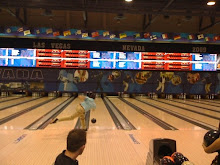Although there are quite of few cases that The Supreme Court used as precedent in the decision of Burlington N. & S. F. R. Co. v. United States. In 1980, Congress passed the Comprehensive Environmental Response, Compensation, and Liability Act (CERCLA). More popularly referred to as Superfund, this law regulates the dumping of waste onto land. If business firms illegally dump waste material, they can be held responsible for three times the actual cost of the cleanup. (Liuzzo, Anthony. Essentials of Business Law. p.519). There was a defiant gray area when it came to the guidelines that companies must follow in regards to liability within the CERCLA(Superfund). The following guidelines were in place prior to The Supreme Court taking this case. CERCLA imposes strict liability for environmental contamination upon four broad classes of PRPs: "(1) the owner and operator of a vessel or a facility,
"(2) any person[5] who at the time of disposal of any hazardous substance owned or operated any facility at which such hazardous substances were disposed of,
"(3) any person who by contract, agreement, or otherwise arranged for disposal or treatment, or arranged with a transporter for transport for disposal or treatment, of hazardous substances owned or possessed by such person, by any other party or entity, at any facility or incineration vessel owned or operated by another party or entity and containing such hazardous substances, and
"(4) any person who accepts or accepted any hazardous substances for transport to disposal or treatment facilities, incineration vessels or sites selected by such person, from which there is a release, or a threatened release which causes the incurrence of response costs, of a hazardous substance. . . ." 42 U. S. C. §9607(a). http://www.supremecourtus.gov/opinions/08pdf/07-1601.pdf. Because of the gaps within the guidelines of the CERCLA, it became clear that the justices needed to establish a new precedence in regards to this case.
Once an entity is identified as a PRP, it may be compelled to clean up a contaminated area or reimburse the Government for its past and future response costs. See Cooper
Industries, Inc. v. Aviall Services, Inc., 543 U. S. 157, 161 (2004).6
In these cases, it is undisputed that the Railroads qualify as PRPs under both §§9607(a)(1) and 9607(a)(2) because they owned the land leased by B&B at the time of the contamination and continue to own it now. The more difficult question is whether Shell also qualifies as a PRP under §9607(a)(3) by virtue of the circumstances surrounding its sales to B&B. http://www.supremecourtus.gov/opinions/08pdf/07-1601.pdf.
Subscribe to:
Post Comments (Atom)

No comments:
Post a Comment